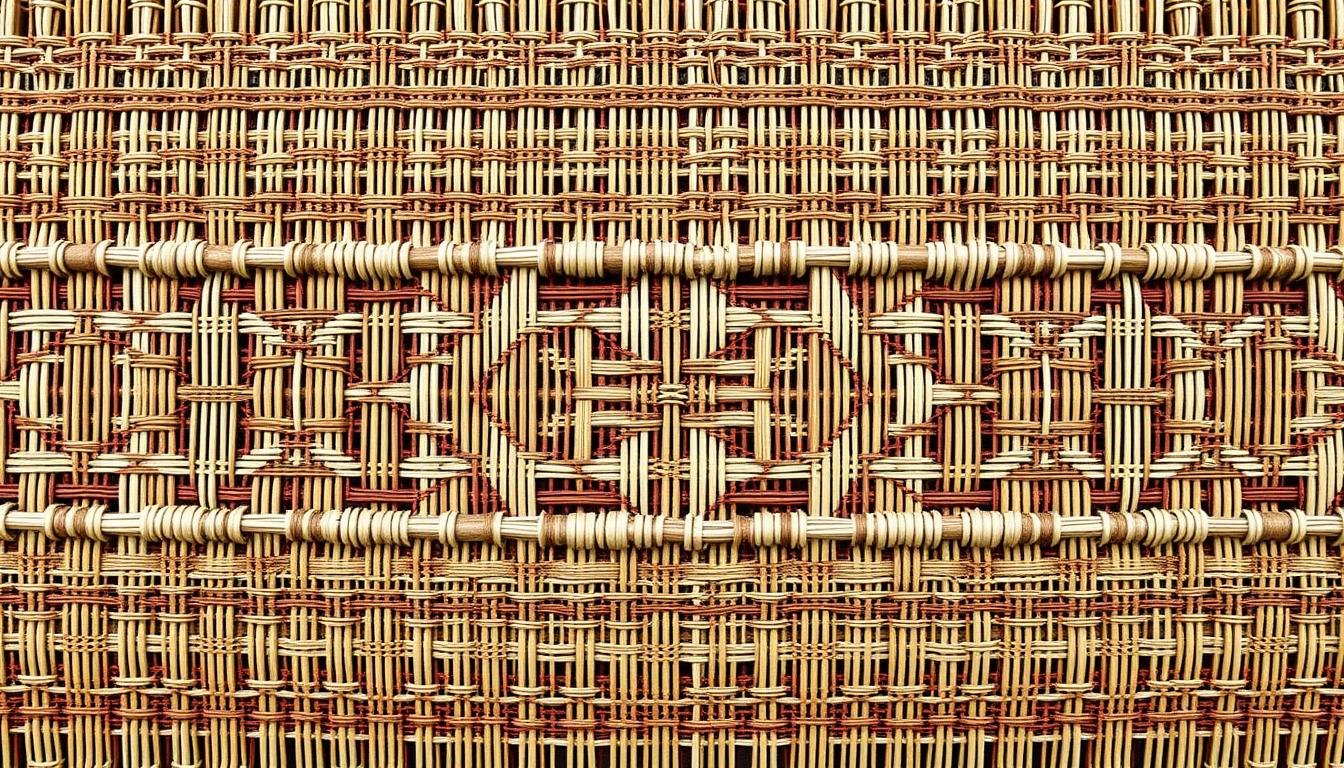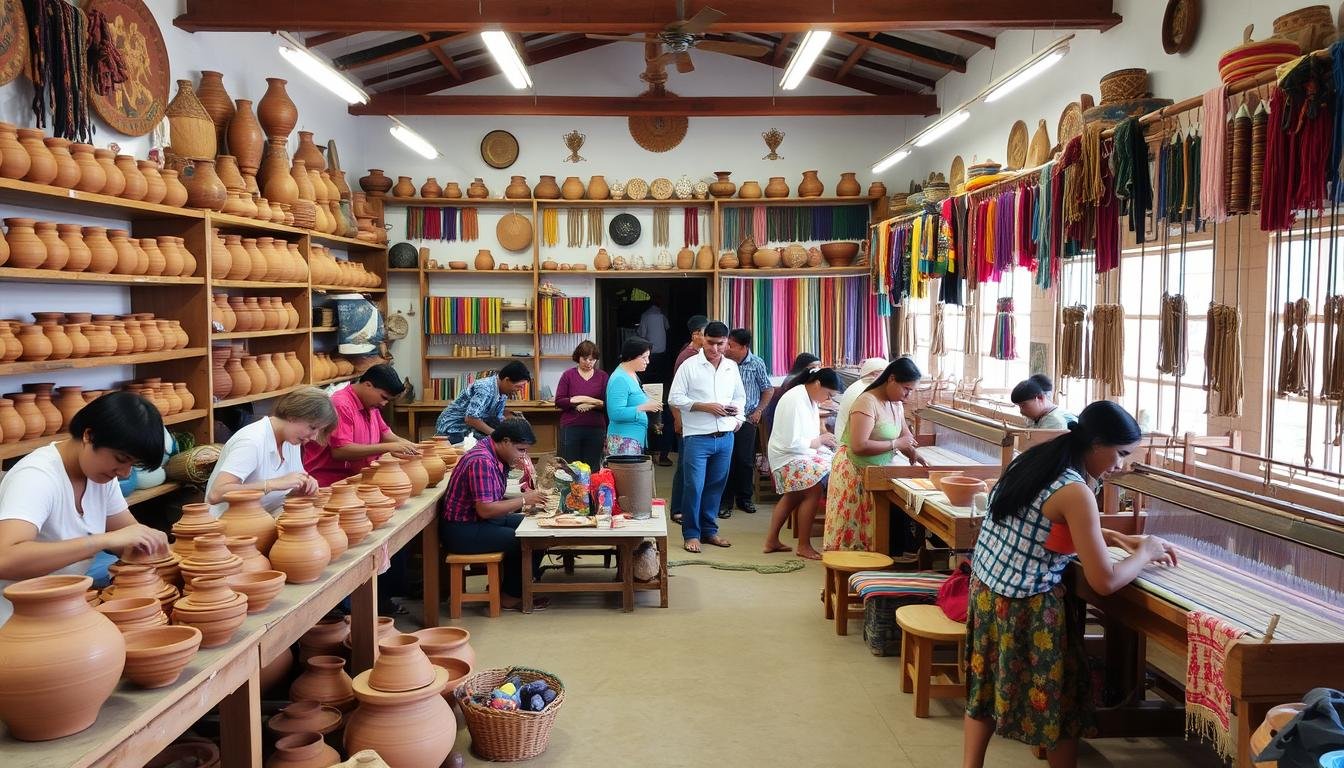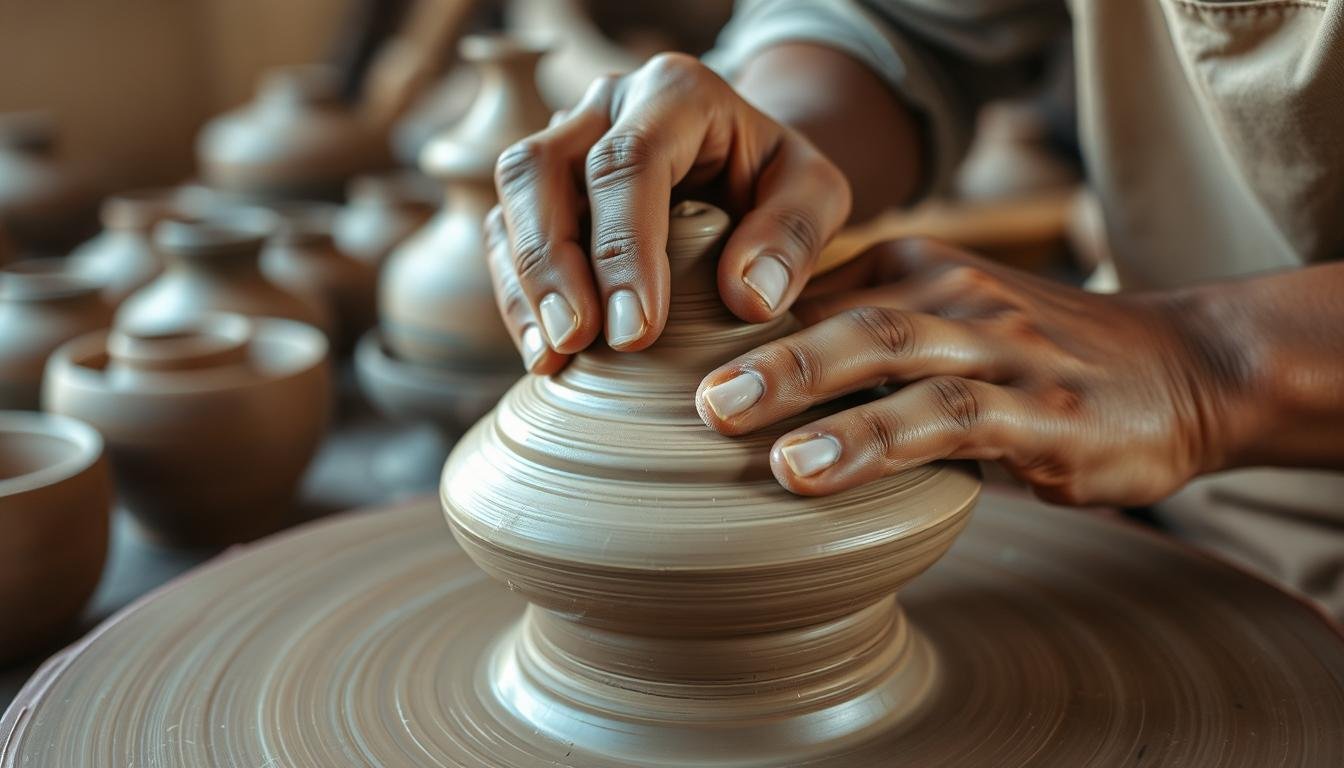In the northwest of the Philippines, Pangasinan is a place full of culture and art. It’s known for its beautiful pottery and vibrant weaving. These crafts show the true spirit of the region. But what makes them special and how have they changed over time? Let’s explore the world of Pangasinan’s crafts together.
Key Takeaways
- Pangasinan is famous for its rich culture and crafts, including pottery and weaving.
- Artisans in Pangasinan use materials like bamboo, rattan, and buri leaves for their crafts.
- There are 15 pottery workshops in Pangasinan, adding to its artistic history.
- About 200 skilled weavers keep a long tradition alive in Pangasinan.
- Festivals like Pista’y Dayat and Bangus Festival highlight Pangasinan’s culture with parades and dances.
Pottery in Pangasinan
Types of Clay Used in Pangasinan Pottery
Pangasinan, a province in the Philippines, is famous for its pottery. It shows the creativity and skill of local artisans. The area uses different types of clay, like stoneware and earthenware.
Stoneware is strong and durable. It’s made by firing clay at high temperatures. This makes it perfect for everyday items like cooking pots and containers.
Earthenware is softer and more porous. It’s fired at lower temperatures. This gives it a rustic look, ideal for decorations and art. The pottery often has beautiful designs, showing Pangasinan’s rich culture.
Artisans in Pangasinan use traditional pottery techniques passed down through generations. These include hand-building, wheel-throwing, and decorating with slip-painting and incising.
“The clay we use in Pangasinan is a testament to the land’s richness and the artisans’ dedication to their craft. Each type of clay has its own story to tell, and together they create a tapestry of Pangasinan’s cultural heritage.”
Weaving Traditions of Pangasinan
Materials Used in Pangasinan Weaving
The art of weaving in Pangasinan has deep roots. It shows the skill and cultural heritage of local weavers. These artisans use indigenous materials to make beautiful baskets, mats, and more.
Bamboo is a key material in Pangasinan weaving. The province’s green landscapes are full of this versatile grass. Weavers turn it into intricate, useful items. Rattan is also common, adding strength and flexibility to the work.
Other materials like buri and raffia leaves are used too. These materials add to the crafts’ unique look. They also show the area’s strong link to nature.
Pangasinan weavers are proud of their work. They believe each piece shares a part of their culture. The patterns and designs have been passed down for generations. They keep the traditional techniques alive that have shaped the area’s art for centuries.

“The woven baskets, mats, and other products of Pangasinan are not just functional items; they are a testament to the skill, creativity, and cultural pride of our local artisans.”
Exploring Local Workshops and Artisans
Visiting local workshops in Pangasinan lets you dive deep into the province’s rich culture. These places are full of creativity and tradition. You’ll see artisans work on pottery, weaving, and other traditional crafts.
At these workshops, you can see how artisans make their products. You’ll learn about their hard work and creativity. Buying something from these artisans helps keep Pangasinan’s culture alive.
Pangasinan is known for its diverse crafts. Each one has its own style and history. You can find everything from Bolinao mats made from buri leaves to bamboo baskets and furniture.
In pottery workshops, you’ll see how they make the famous Pottery Burnay. This is used to store water, rice, and other items. It’s a beautiful piece that shows the region’s cultural heritage.
| Craft | Region | Description |
|---|---|---|
| Wooden Loom Weaving | Ilocos Region | Traditional wooden looms are used for producing handwoven textiles by Ilocanos. |
| Pottery Burnay | Pangasinan | Pottery burnay serves as storage for water, rice grains, salt, brown sugar, basi (local wine), and bagoong (fermented fish). |
| Bolinao Mats | Pangasinan | Bolinao mats are made from buri or raffia leaves and bamboo crafts like baskets and furniture. |
| Kain Textile | Kalinga | Kain textile is worn by southern Kalinga women. |
| Saya Skirt | Kalinga | Saya is a common woman’s skirt in the Kalinga region. |
These workshops help keep Pangasinan’s traditional crafts alive. They also support the artisans’ livelihoods. By buying from them, you help the local economy and get unique souvenirs.
“Handicrafts contribute significantly to the cultural preservation and economic development of the Philippines.”
The Impact of Local Crafts on the Community
The local crafts and artisanal traditions of Pangasinan deeply affect the community. They boost the economy and bring people together. The demand for these handcrafted items helps many artisans make a living. This supports the sustainable growth of the province.
By buying local crafts, people get unique items and help keep Pangasinan’s culture alive. They also support the artisans, which helps the community and boosts the artisans’ pride. This creates a positive cycle that benefits everyone involved.
The social benefits of these crafts are huge. They bring people together, creating a sense of unity. Artisans share their skills and knowledge, keeping traditions alive. The money made from these crafts helps artisans support their families and communities.
The local crafts of Pangasinan show the region’s creativity and cultural depth. By supporting these crafts, visitors and buyers help the community grow. They ensure the craftspeople’s skills and traditions continue, making a big difference.
| Craft | Impact on Community |
|---|---|
| Pottery | Provides employment and income for local potters, preserves traditional techniques, and fosters a sense of cultural identity. |
| Weaving | Sustains the livelihoods of weavers, maintains the integrity of ancient textile traditions, and promotes the unique designs and patterns of the region. |
| Bamboo Crafts | Utilizes local natural resources, generates income for artisans, and contributes to the sustainable development of the community. |

“The local crafts of Pangasinan are not merely products to be purchased, but rather a testament to the creativity, resilience, and cultural richness of the region.”
Conclusion
Pangasinan’s rich cultural heritage shines through its lively tradition of craftsmanship. We’ve seen the beauty of pottery and weaving in this article. It tells us about the history, techniques, and importance of these crafts.
Readers learned about the materials used in pottery and weaving in Pangasinan. They also saw how these crafts help the community.
Visiting local workshops lets visitors dive into Pangasinan’s cultural heritage. They can buy unique, handcrafted items that show the province’s artistry. Pangasinan is working hard to keep its traditional crafts alive, inviting everyone to see its artistic side.
Pangasinan’s crafts, like its famous pottery and weaving, show the creativity of its people. These crafts keep the province’s cultural identity alive. They also make visitors appreciate the special world of Filipino crafts in Pangasinan.
FAQ
What are the types of clay used in Pangasinan pottery?
What materials are used in Pangasinan weaving?
How can visitors engage with Pangasinan’s local artisans?
What is the impact of Pangasinan’s local crafts on the community?
Source Links
- Arts and Crafts of Pangasinan: A Cultural Guide
- Exploring the Culture of Pangasinan: Traditions & Arts
- GR.7- MAPEH (ARTS)_ FOLK ARTS LESSON 1.pptx
- Region 1 cultures and traditions
- Pangasinense People of Pangasinan: History, Culture and Arts, Customs and Traditions [Philippines]
- Banaan Pangasinan Provincial Museum (Lingayen) – B.L.A.S.T. – Live Life to the Fullest ……… Don’t Stay Put
- lesson 1 handicrafts( crafts and art) .pptx
- Arts in the Philippines
